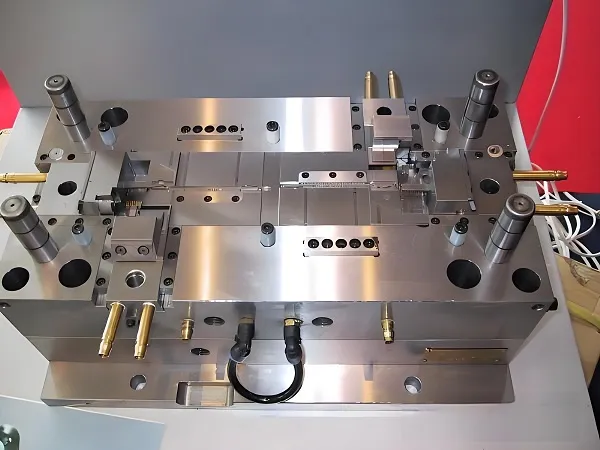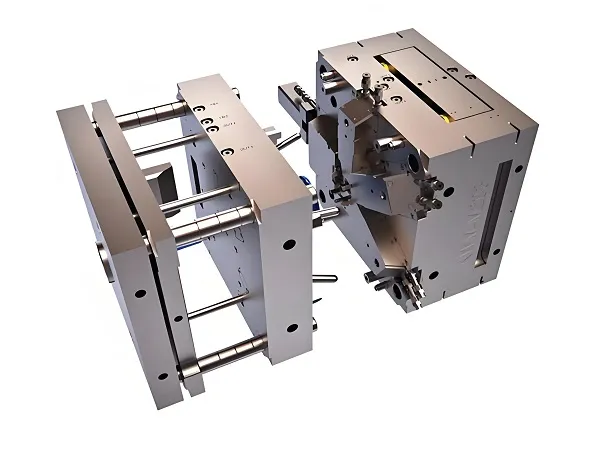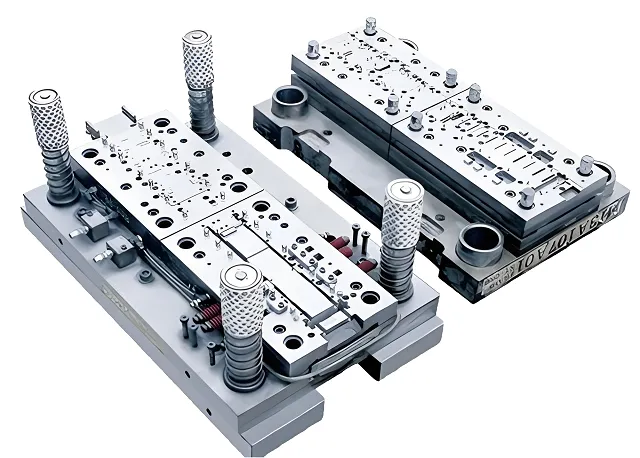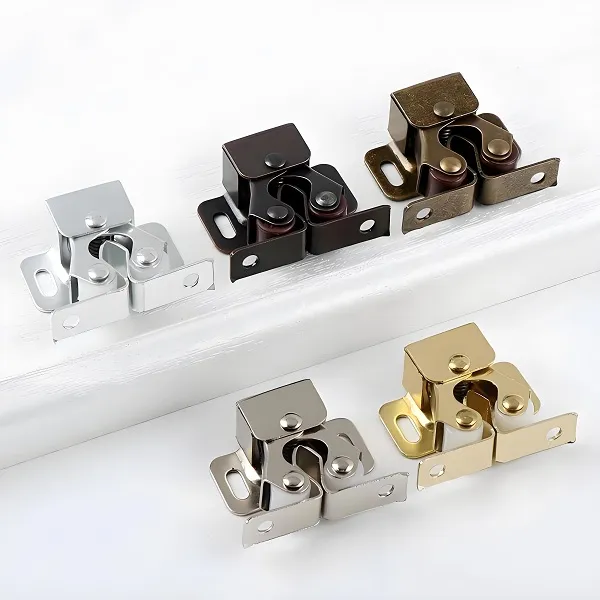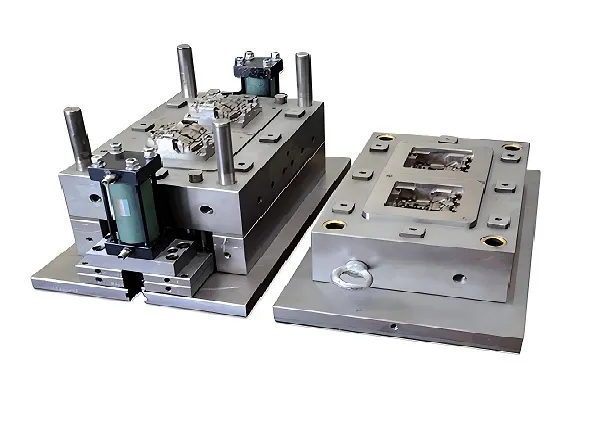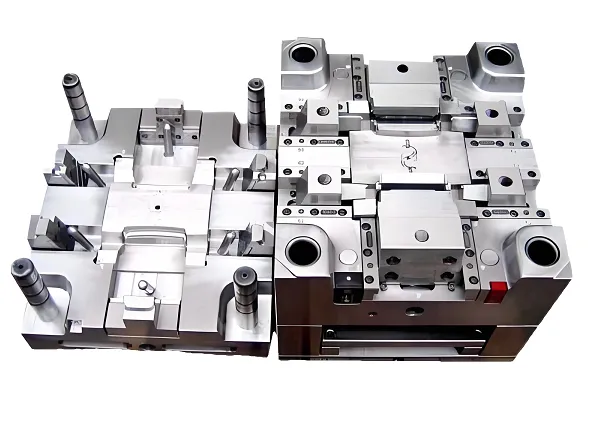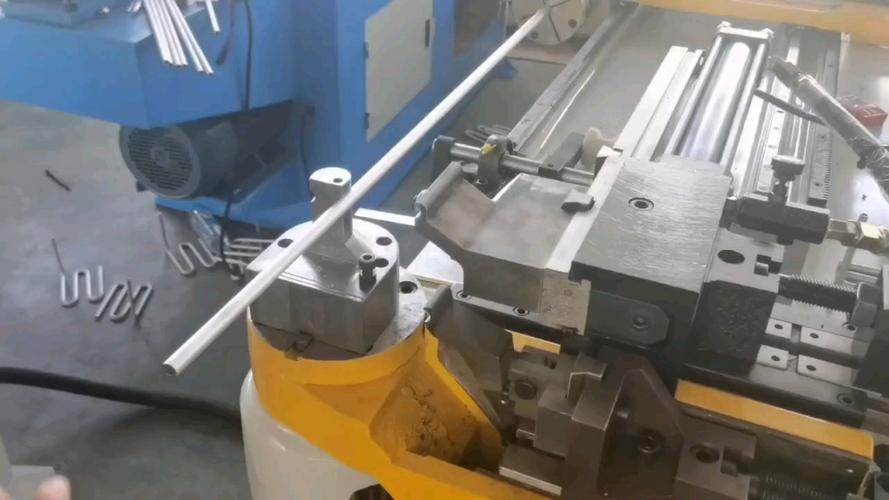
Core Technologies in CNC Pipe Bending
1. Multi-Axis CNC Bending Systems
- 5-axis synchronous control: Coordinates bend angle, rotation, and feed rate in real time, enabling complex sequences (e.g., back-to-back bends, offset bends) with ±0.1mm positional accuracy. A stainless steel automotive fuel line with 3 sequential 45° bends achieved 0.05mm alignment between bends, ensuring leak-free assembly.
- Servo-driven bending: Uses closed-loop servo motors to control bend radius (R = 1.5× to 6× pipe diameter) and angle (0°-180°) with ±0.5° precision. A 25mm aluminum HVAC duct with a 90° bend maintained a consistent wall thickness (±0.03mm), avoiding thinning in the bend area (≤15% reduction, exceeding industry standards).
- Mandrel bending technology: Integrates internal mandrels (ball, plug, or segmented) to prevent tube collapse during bending, critical for thin-walled pipes (0.5-2mm thickness). A 16mm copper refrigeration tube with a tight bend radius (R = 2× OD) showed no wrinkling or ovality (≤2% deviation from roundness).
2. Precision Tooling & Fixturing
- Custom die design: Engineers create bend dies, clamp dies, and wiper dies tailored to pipe material and geometry, ensuring uniform contact pressure. A 304 stainless steel hydraulic pipe (OD 50mm) bent with a custom die achieved Ra 1.6μm surface finish, eliminating post-bend polishing.
- Quick-change tooling: Reduces setup time by 60% for multi-part production, enabling seamless 切换 between pipe sizes (6mm-100mm OD) and bend radii. A production line for industrial tubing switched between 12mm and 20mm pipes in <10 minutes, maintaining ±0.1mm repeatability.
- Anti-ovalization fixtures: Uses segmented clamps to distribute pressure evenly, limiting ovality to ≤1% for critical applications (e.g., aerospace hydraulic lines). A titanium aerospace tube (OD 19mm) bent with this technology maintained 99.5% roundness, ensuring proper fitting engagement.
3. Material-Specific Bending Strategies
- Heat-treated bending: Pre-heats high-strength alloys (e.g., 4130 chromoly steel) to 300-500℃ to improve ductility, reducing springback (the tendency of pipes to straighten after bending) by 70%. A 40mm chromoly steel roll cage tube with a 120° bend showed only 0.5° springback, requiring minimal post-bend correction.
- Cold bending for soft materials: Processes aluminum (6061-T6) and copper at ambient temperature with controlled feed rates (50-200mm/min) to prevent work hardening. A 20mm aluminum automotive intercooler pipe bent cold maintained 290MPa tensile strength, meeting structural requirements.
- Thin-wall protection: Uses low-friction wiper dies and slow bend speeds (≤5°/sec) for tubes with wall thickness <1mm, preventing cracking. A 10mm OD stainless steel medical gas tube (wall 0.8mm) with a 90° bend showed no micro-cracks under ultrasonic inspection.
4. Quality Control & Measurement
- In-line laser measurement: Real-time laser systems check bend angles, radii, and straight segments during production, compensating for material variations (e.g., hardness differences) with ±0.05mm adjustments. A batch of 1,000 16mm steel pipes achieved 99.8% conformance to bend angle specifications.
- 3D scanning inspection: Captures full pipe geometry post-bending, comparing to CAD models with color-coded deviation maps (≤0.1mm acceptable). A complex automotive exhaust pipe with 5 bends showed <0.08mm total deviation, ensuring fit with OEM manifolds.
- Pressure testing: Hydrostatic testing (1.5× working pressure) verifies leak tightness for fluid-carrying pipes, with helium leak detection (≤1×10⁻⁹ Pa·m³/s) for high-purity applications (e.g., semiconductor gas lines).
Material Expertise: Matching Pipes to Bending Requirements
|
Material
|
Key Properties
|
Bending Characteristics
|
Applications
|
|
Stainless Steel (304/316)
|
515MPa tensile strength, 1,000+ hours salt spray
|
Moderate springback; requires mandrel bending
|
Hydraulic lines, marine plumbing, food-grade tubing
|
|
Aluminum Alloy (6061-T6)
|
310MPa tensile strength, 2.7g/cm³ density
|
Low springback; excellent cold bendability
|
Automotive intercoolers, HVAC ducts, lightweight frames
|
|
Carbon Steel (1018/4130)
|
440-650MPa tensile strength, cost-effective
|
High strength; may require pre-heating for tight bends
|
Structural tubing, roll cages, industrial piping
|
|
Copper/Brass
|
220-370MPa tensile strength, 65% IACS conductivity
|
Excellent ductility; minimal wrinkling
|
Refrigeration lines, electrical conduits, plumbing fixtures
|
CNC Pipe Bending Process Flow
- Design & DFM Analysis: Engineers optimize pipe designs using CAD/CAM software to:
-
- Define bend radii (≥1.5× OD for most materials to avoid thinning)
-
- Calculate springback compensation (adding 1-3° to target angles)
-
- Identify straight segments (≥3× OD between bends for tool clearance)
- Material Preparation:
-
- Cut pipes to length (±0.5mm tolerance) using CNC saws or laser cutters
-
- Deburr ends (≤0.05mm edge radius) to prevent tool damage
-
- Clean surfaces (degreasing, pickling for stainless steel) to ensure die contact
- CNC Bending Setup:
-
- Install custom dies and mandrels (if required)
-
- Calibrate bending parameters (speed, pressure, angle) via test bends
-
- Program bend sequence (angle, rotation, position) in G-code
- Precision Bending:
-
- Automated feeding and clamping of pipes
-
- Sequential bending with real-time angle monitoring
-
- Post-bend springback correction (if needed) via secondary passes
- Finishing & Inspection:
-
- Deburr bend areas and remove tool marks
-
- Surface treatment (painting, plating, passivation) per requirements
-
- 100% dimensional inspection (CMM, laser scanning) and pressure testing
Applications of CNC Pipe Bending
- Automotive Industry: Stainless steel exhaust pipes (with 3-5 bends), aluminum fuel lines, and turbocharger intercooler tubes—e.g., a custom exhaust pipe for a racing car with 4 sequential bends achieved 0.05mm alignment, reducing backpressure by 15%.
- Aerospace & Defense: Titanium hydraulic lines (R = 2× OD), aluminum airframe tubing, and nickel-alloy fuel lines—all meeting AS9100 standards for leak tightness and dimensional stability.
- Industrial Machinery: Carbon steel structural tubing for conveyor frames, stainless steel hydraulic lines for presses, and copper refrigeration pipes for chillers—e.g., a 50mm OD steel pipe with a 180° bend for a hydraulic press maintained 200bar pressure without leakage.
- Plumbing & HVAC: Copper water lines, aluminum ducting, and PVC-coated steel pipes for commercial buildings—custom bends ensure fit in tight spaces (e.g., under-sink plumbing with 90° offsets).
Customization Capabilities: From Prototypes to Production
- Complex geometry bending: Multi-plane bends (up to 10 bends per pipe), variable radii, and offset bends—e.g., a medical gas manifold with 8 bends in 3 planes achieved ±0.1mm positional accuracy.
- Low-volume prototypes: 1-100 units in 3-5 days, ideal for design validation (e.g., automotive concept car tubing).
- High-volume production: 10,000-100,000+ units/month with automated feeding systems, statistical process control (CPK ≥1.33), and traceable batch documentation.
- Material versatility: Bending pipes from 6mm-100mm OD, wall thickness 0.5mm-10mm, across metals and alloys.
Common CNC Pipe Bending Questions
- Q: How to avoid wall thinning in tight-radius bends?
- Q: What’s the maximum number of bends per pipe?
- Q: Lead time for 5,000 custom bent steel pipes?
- Q: Can you bend coated pipes without damaging the finish?

